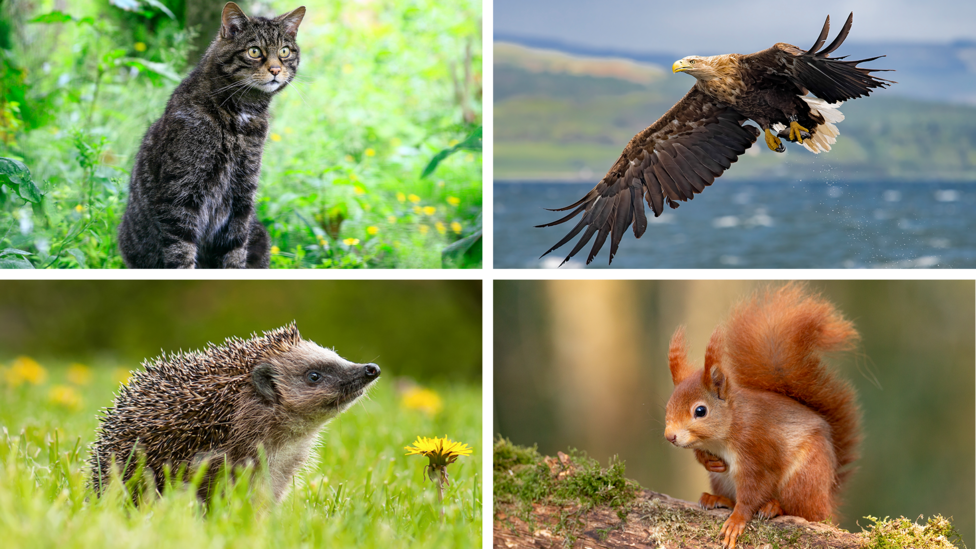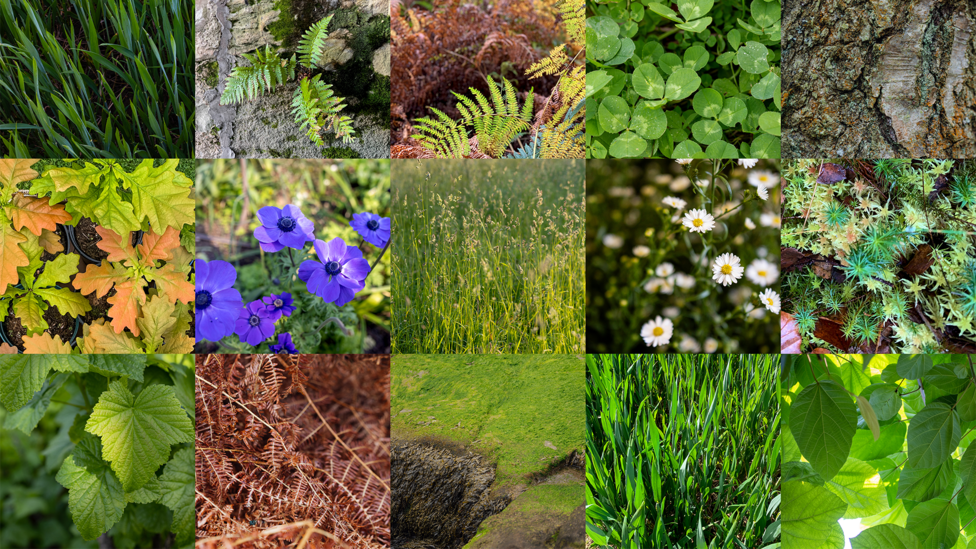Create your own eco climate mascot!
You have been assigned a very important mission... choosing your very own planet-saving sidekick! First, pick an endangered animal to stand as your hero, then place them in a habitat of your choice, and finally equip your hero with an eco-action to help them conquer climate change!
Why are these UK animals endangered?

Scottish wildcat
Scottish wildcats look very similar to a domestic cats and weigh around 5kg. They prefer to hang out in woodland areas and can reach top speeds of 30 mph.
Unfortunately, the number of true Scottish wildcats is very low, and it's estimated that there are 35 or fewer left in the wild.
Scottish wildcats are under threat due to loss of forest habitats, and cross-breeding with domestic cats. Thanks to captive breeding, this true Scottish wildcat gene survives.
White-tailed eagle
The white-tailed eagle is the UK's largest bird of prey, with a wingspan of up to 240 cm! They live in a range of habitats, including uplands, coastal areas, farmlands and wetlands.
White-tailed eagles actually went extinct in the UK during the early 20th century due to illegal hunting! Luckily, they were successfully reintroduced to parts of Scotland in the 1970s and now there are estimated to be around 152 pairs of white-tailed eagles left in the UK.
Hedgehog
Hedgehogs are nocturnal animals which means they sleep during the day and come out at night. They get their name from where they build their homes - in hedges - and the 'hog' part come from the snorting sounds they make. They have over 5,000 spikes that they raise when feeling threatened.
It may come as quite a surprise that hedgehogs are recognised as endangered animals in the UK. In 2020, they became part of the IUCN Red List as 'vulnerable to extinction', this is due their habitats being changed or destroyed by human development.
Red squirrel
Red squirrels have a orange-red fur which can change colour in winter to brown, grey or white. They prefer to live in woodland habitats, where they enjoy a vegetarian diet of seeds and nuts.
Britain has an estimated 120,000 to 160,000 red squirrels left, living mostly in Scotland and Northumberland. This number sounds like a lot, but they now compete with the grey squirrel - which numbers over 2.7 million and counting. Grey squirrels are one of the main threats to red squirrels as they carry disease and reproduce faster, competing for food and taking over habitats.
What is a habitat?

There are lots of different habitats within the UK that are home to many forms of incredible wildlife. A habitat is an environment where the climate, terrain, and plants create ideal conditions for wildlife to live, mate, and find food. Habitats like mountainous areas, for example, are home to animals better adapted to colder temperatures, high winds and rocky terrain.
Whether animals are living in woodlands, along coastlines, high in the mountains or even on the streets of towns and cities, they are adapting to a changing world. As humans expand into their spaces the effects can be disastrous. However, there are actions we can take to help wildlife adapt successfully.
How will these eco-items help the environment?
Renewable energy
Renewable energy, like solar panels and wind turbines, is beneficial to the environment because they emit little to no greenhouse gases.
Planting wildflowers
Not only are wildflowers important for the environment as they remove carbon dioxide (CO₂) from the atmosphere, they also create new habitats for birds, bees and lots of other animals.
Encouraging and protecting sea plants
Sea plants like kelp, seaweed and moss are incredibly important to maintain a healthy ecosystem within our waters. The plants absorb carbon dioxide through photosynthesis, removing it from the atmosphere.
Recycling clothing
Recycling, repairing and creating more products from recycled materials saves energy and reduces the amount of waste that ends up in landfills.
Want more green content? 💚
Where can I watch Blue Peter? ⛵️
You can join Joel, Shini and Abby and watch Blue Peter on CBBC every Friday at 5pm or catch all episodes on BBC iPlayer!